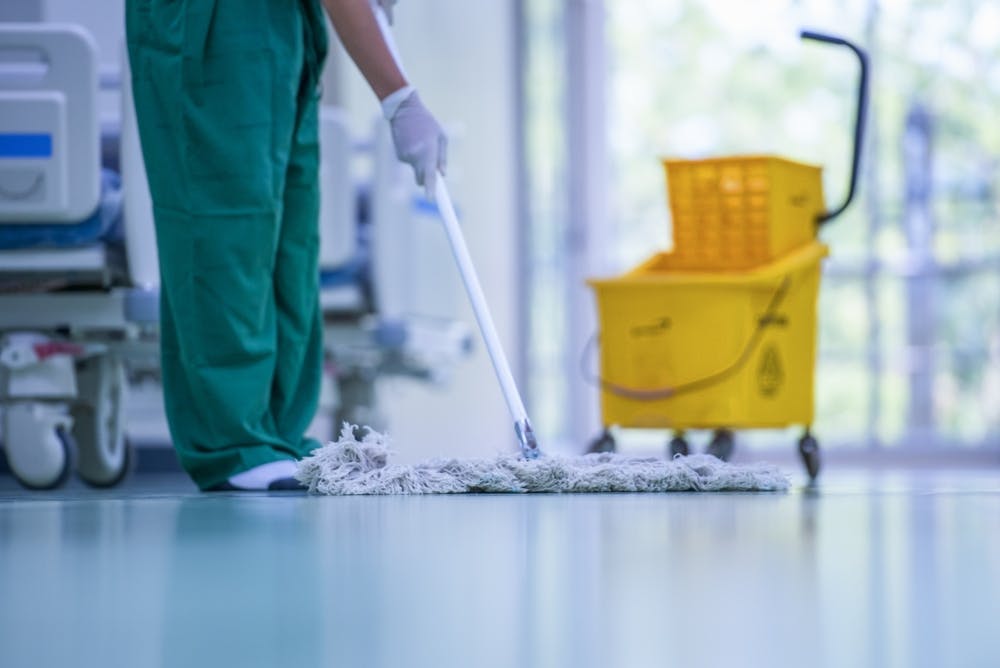Sanitizing an OB/GYN office is important not just for patients' and practitioners' safety, but also to show patients that their comfort is paramount. The Centers for Disease Control and Prevention (CDC) offers specific guidance on products to use and how to classify equipment in your office. However, developing a cleaning and sanitizing schedule, especially for common areas such as waiting rooms and breakrooms, is up to the individual practice.
Establishing a schedule and protocols to sanitize office equipment and clean all areas will help keep staff aware of expectations. To get started, the CDC defines levels of cleaning, from general cleaning, to sterilizing to high-level disinfecting. Sterilizing means removing all microorganisms from the equipment. High-level disinfection (HLD) means removing pathogenic microbial life, but some bacterial spores may be left behind. HLD is acceptable on some equipment, while sterilization should follow a regular schedule according to what works for your office.
Guidelines for Sanitizing Office Equipment
The CDC recommends creating your sanitizing plan based on the Spaulding Classification of medical and office equipment. The three basic categories of the Spaulding system provide a good baseline for developing an effective office cleaning schedule.
- Critical items: These are the instruments that carry the greatest risk of spreading infection to your patients if they are not sterilized. This includes any equipment that comes in contact with bodily fluids or enters the body, such as endocavity ultrasound probes. Critical items need to be sterilized between each patient use. The CDC recommends steam as the preferred method, but not all equipment can tolerate heat. Chemical substances include hospital-grade cleaners, such as hydrogen peroxide gas plasma or peracetic acid.
- Semicritical items: These items touch patient mucous membranes and nonintact skin; they include laryngoscope blades, some catheters and diaphragm fitting rings. The CDC recommends high-level disinfection with FDA-approved chemical disinfectants between patients for these items, with routine sterilization. However, some bacterial spores left behind on these do not seem to pose additional risk to patients. Your office still needs to sterilize semicritical items regularly.
- Noncritical items: These come in contact with skin, but not mucous membranes. This category generally refers to everything else in your office, from waiting room floors to patient exam tables. Daily cleanings with wipes or mopping is best, along with cleaning after any spills or messes. These areas do not need to be cleaned with hospital-grade disinfectants. Less powerful cleaning products, such as wipes or detergents, can be used in these areas. Your regular cleaning schedule should include a deep cleaning of all office areas at least once a week or once a month.
These guidelines are general and do not account for the complexity of cleaning some equipment. As you develop a cleaning procedure for your office, be sure to check the manufacturers' recommended maintenance for your specific equipment. Following the intended cleaning guidlines for a probe or ultrasound machine is important for sanitizing it thoroughly and keeping the equipment in good working order.
Overall, these instructions can fill in gaps for sterilizing equipment when it may not be feasible to fully sterilize after each visit. They also provide guidance on acceptable cleaning products and methods to use. Having a plan in place to effectively sanitize office equipment will help you prepare and keep your patients safe from the spread of infection.



